Introduction to who can buy agricultural land in Vietnam: Vietnam is a country that develops agriculture. Although many people consider the country poor, agriculture is the backbone of the country’s economy. In Vietnam, land in general and agricultural land is owned by all people and is represented by the state. As land is the main source of land for agricultural production in Vietnam, the land policy is of great interest to the Vietnamese government.
Approximately, the area of agricultural land for Vietnam was 121,688 square kilometers. About 40% of Vietnam’s land area is devoted to agricultural production. Developing a more flexible and efficient land planning management system, and anti-corruption in land management brings Vietnam’s land governance system closer to a middle-income country. Land is one of the most important inputs for agricultural production in Vietnam. Particular focus has been placed on land policy systems and land use planning processes. The implementation mechanism has worked in collaboration with multiple central agencies and local administrative units.
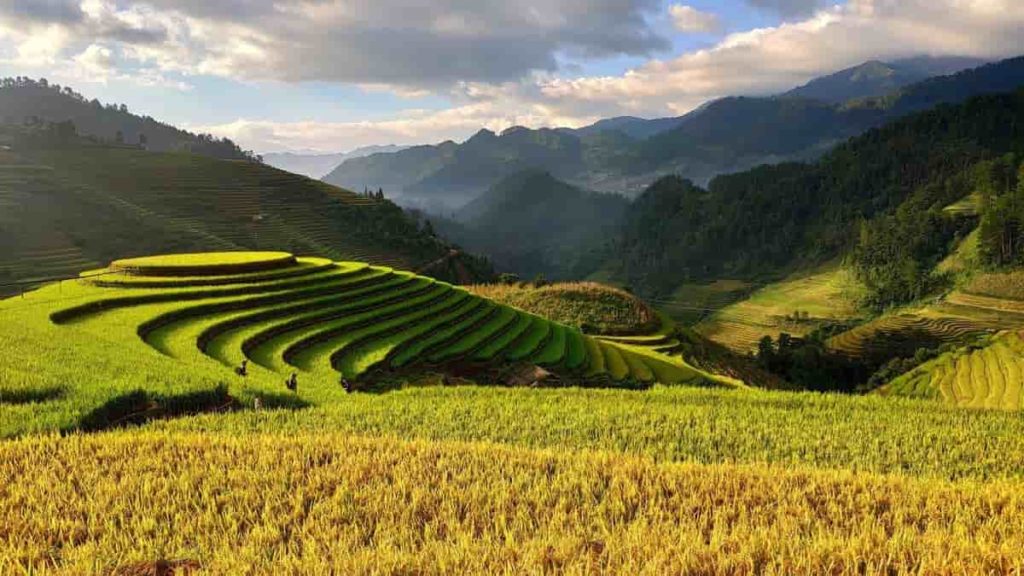
Agricultural land is one of the most valuable natural resources in Vietnam. Today, in the context of a socialist-based market economy in Vietnam, agricultural land is one of the most crucial resources for the survival and development of farmers. Since the renovation began, the state has issued policies to help farmers gain access to land use rights. These policies have had a positive impact on agricultural land and agriculture in general in Vietnam. However, to make its agriculture stronger and more sustainable, Vietnam must be prepared to deal with many new land policy issues in a timely and appropriate manner in its future development.
Vietnam is a country that develops agriculture. Since agriculture is the backbone of the country’s economy, land laws provide many regulations for the protection and improvement of agricultural land. Agricultural land is allotted to the people for agricultural production and the person to whom the land is allotted is not allowed to use the agricultural land for wrong purposes unless it is approved by the competent state authority.
A guide on who can buy agricultural land in Vietnam, Land rights and legislation, Policies impact on the agricultural land fund, land prices, restrictions
In case if you miss this: How to Buy Agriculture Land in India & Who Can?
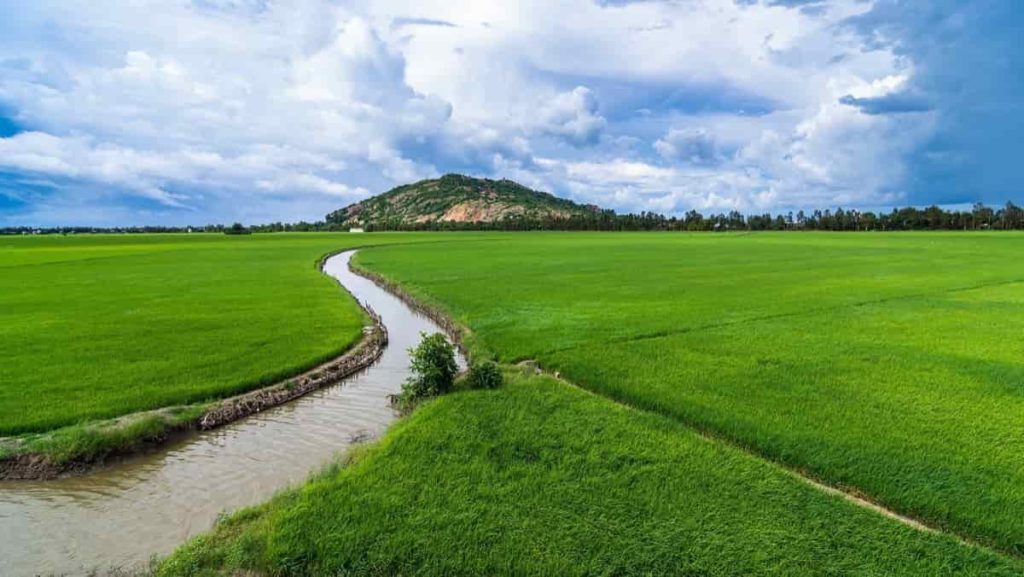
Can foreigners buy agricultural land in Vietnam?
No, foreigners cannot own agricultural land in Vietnam because the country has strict control over the ownership of foreign land. Unlike other Southeast Asian countries, foreigners cannot buy or own land. Instead, the land is collectively owned by all Vietnamese people but is administered by the state. Foreigners and foreign organizations are allowed to lease land, as written in the National Land Law.
Land rights and legislation for buying agricultural land in Vietnam
In Vietnam, agricultural land is owned by the state. Individuals and organizations can only acquire land use rights, including agricultural land. Vietnam adopted a new land law in 2013, which came into force on July 1, 2014. The government and agencies have issued several orders and circulars to enforce the land law.
Restrictions on Lease Terms – In most cases, the maximum term applicable to the lease (or use) of agricultural land is 50 years. Land leases should not exceed 70 years for large investment projects with the slow recovery of capital, or for projects in difficult socio-economic conditions that require the long term.
Extension of agricultural land rights in Vietnam
Many Vietnamese rice farmers’ land use rights are unnecessarily restricted by legal provisions that allow for land use planning, allocation, and land for rice production under the LURC issue. Prevents change of land use purpose when the parcel is assigned. This provision, introduced in the Land Act of 2003, was intended to support food security, but there are good reasons to reconsider this policy. First, nationally, Vietnam has reached or exceeded most of its food security goals. The country now produces a large surplus of rice, with more than a third of the national crop (and about 70% of the crop in the Mekong Delta) going for export.
In recent years, national overall rice consumption has begun to decline as urban and middle-income households have begun to shift their eating habits and food costs to a variety of other foods. Secondly, as a public policy, ordering that land be used for rice cultivation when other uses are preferred by farmers is ineffective, inefficient, and unequal. The current policy is ineffective as it restricts the use of land and other resources (labor, capital, finance) at a relatively low cost.
It is also ineffective because the remaining pockets of food insecurity are mainly due to poverty and lack of sustainable livelihood, not due to inadequate aggregate supply of rice. The country’s current food security challenges need to be addressed from the perspective of nutrition, food security, food security, and livelihood support, rather than focusing on the quantity of rice produced. Finally, the policy is unequal as it forces a large number of rice growers to continue producing rice, which makes them significantly more productive than they are when they use their land resources more productively. According to experts, over the next two decades, Vietnam will maintain a large amount of rice, despite population growth and the effects of climate change.
In case if you miss this: Organic Farming In Nagaland, How To Start?
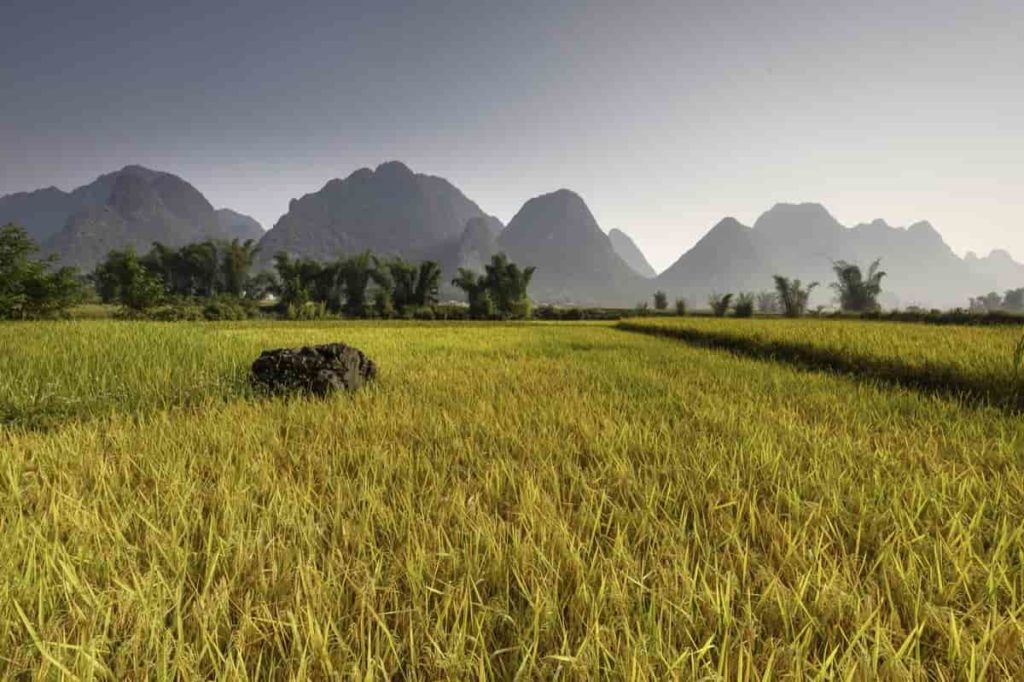
Policies impact on the agricultural land fund in Vietnam
The key content of Vietnam’s agricultural land policies is expressed in the terms of agricultural land ownership, state guidelines on land value, agricultural land concentration, and collection policy, agricultural land tax policy for agricultural land recovery.
In general, agricultural land tax policies have been significantly streamlined, with taxes on farmland transfer transactions aimed at encouraging land accumulation and collection by farmers, and exemption with the land.
Agricultural land ownership tenure in Vietnam
The term of ownership of agricultural land in Vietnam is expressed in two rights: the right of ownership and the right of use. The state, subject to the right of ownership (land belongs to all the people with whom the state representative owns), the people, especially the peasants, are subject to the right to use the land. This type of ownership period is specific to most countries in the world.
As a landowner and public administrator, the state has the right: to reclaim the right of farmers to use the land, to change the purpose of use of agricultural land, and to decide the transfer of agricultural land. The use of which has been discussed, organizations and individuals who are not farmers, and the pricing of agricultural land reclamation. Farmers can use agricultural land for agricultural production purposes. In addition to their right to use, farmers have the right to transfer, inherit and mortgage their right to use. Under current law, the term lease of agricultural land to farmers is 50 years for land used for perennial crops and 20 years for other lands. Land in Vietnam is officially divided into agricultural land, non-agricultural land, and unused land.
The category of agricultural land consists of the following types: land for agricultural cultivation, forest land, land for aquaculture, land for salt production. Agricultural land is further subdivided into perennial crops and annual crops, which are further subdivided into rice and short-term crops. Forest land is divided into protected forest land and specially used forest land. Land classification provides the basis for land management and planning.
Foreign direct investment – Foreign investors generally invest in the agricultural sector in Vietnam, primarily through the following investment laws and business law;
- Wholly foreign-owned Joint ventures with companies or local investors.
- Purchasing shares in Vietnamese companies or conducting mergers and acquisitions of enterprises, etc.
Agricultural land use in Vietnam
Currently, small land is dominated by agricultural land use in Vietnam. According to the GSO, 70% of the 10.4 million farming households have less than 0.5 hectares of land and only 3% have more than 3 hectares. This is especially true in the Red River Delta, where 94% of households have an area of less than 0.5 ha. These lands usually consist of several small plots. In the Red River Delta, it is not uncommon for a family’s limited lands to include four to six small plots. Thus, only a very small portion of farming households (especially those with more than 2 or 3 hectares) can survive on rice income alone.
Although the economies of scale in Vietnam’s agriculture are still hotly debated among academics, it is widely acknowledged that large farm-sized farmers have higher labor productivity, more efficient use of available resources, and risks managed in a way that makes them better. In addition, land storage (increasing the volume of land) facilitates agricultural efficiency by redistributing scarce land resources to less efficient farmers than to more efficient farmers.
One potential negative effect of allowing land to be accumulated is that it will come at the expense of the welfare of farmers who lose land if they are unable to find a viable alternative source of livelihood. However, if all transactions are voluntary, the risk is less serious if the farmers who lose their land do so only voluntarily and with substantial compensation. It is the government’s goal and expectation that in the next decade or so, the proportion of the Vietnamese population, which is mainly dependent on basic agriculture for income, will be reduced from about 50% to 30%.
In case if you miss this: Organic Farming In Assam, How To Start
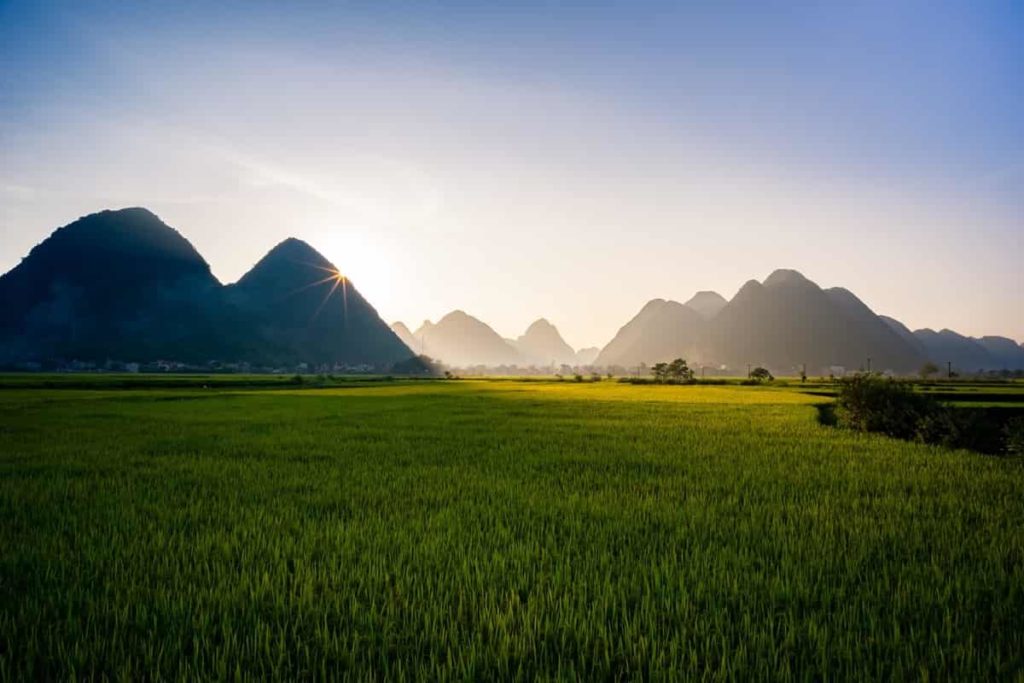
The current government policy, which limits land, was first legalized under the Land Act 1993, which desire to maintain a fair distribution of land among farmers and to prevent the formation of a new “landlord class”. The law limits annual agricultural land acquisition in the Mekong Delta area to 3 hectares and other areas to 2 hectares. Boundaries for perennial cropland are 10 hectares in river delta areas and 30 hectares in elevated and mountainous areas.
Under the Land Act 2003, the boundaries of land ownership were changed to the limits of land allocation by the state, that is, at most, the state allocated so much land to a family or individual (without depositing money). Can Those who want to acquire more land will have to acquire it from other land users who have agricultural land and are willing to sell their land-use rights. The law also calls for limiting the total amount of agricultural land that a family or individual can accumulate through a transfer of land.
Agriculture land use rights in Vietnam
Since the introduction of the government’s “Doi Moi” policy in 1986, Vietnam has undergone a major transition from a centrally planned economy to a market-based economy. With the transition came economic growth at rates that exceeded many other comparable economies in terms of gross GDP as well as exports, agricultural output, and labor productivity. This transition led to a distinct change in the pattern of land use in the agricultural sector, with the redistribution of communally occupied land to the land controlled by individual households.
At the same time, the method of agricultural production shifted from agricultural cooperatives to farm households. Those who benefit from increased productivity due to agricultural investment, greater access to credit, and the benefits of trading in the land markets may receive the financial capital they need to finance many economic activities. In addition, long-term investment in land can save labor after the initial planting phase, resulting in shifting labor hours to other non-agricultural activities.
Agricultural land prices in Vietnam
Agricultural land prices have doubled and tripled in Vietnam’s southern provinces, as some land brokers say many buyers leave the city. The trend of moving people from the city to the outskirts began more than a year ago and has escalated due to epidemics. Social distance measures have forced more and more people to explore gardens and farmland instead of being confined to a crowded city.
This trend is driving up land prices. Approximately in Da Lot, the value of each plot of 1,000 square meters of agricultural land last year was VND400-VND700 million (the US $ 17,000 to $ 30,000). Approximately, the value of agriculture plot reaches between VND3 billion and VND6 billion (US $ 128,000 and the US $ 256,000, respectively).
Agriculture land prices have gone up in the Mekong Delta areas like Long An, Tien Giang, and Dong Thap. Agricultural land in the provinces of Bien Hoa and Dong Nai is reported to reach approximately VND2 to VND2.5 billion per plot (US $ 85,000 and US $ 107,000, respectively).
Note: These agricultural land prices will change based on many factors. Soil quality, topography, climate, and groundwater availability, etc., have a significant effect on land prices. Some other natural factors affect the value of agricultural land. Agricultural land prices change based on many factors such as agro-climatic conditions, topography, existing irrigation facilities or type of irrigation infrastructure, average annual rainfall threshold, infrastructure including roads and markets.
In case if you miss this: Organic Farming In Bihar, How To Start
Are there restrictions on buying agricultural land in Vietnam?
For buying agricultural land, consider any restrictions on local and foreign investors and legal entities. In Vietnam, agricultural land is state-owned. Individuals and organizations use the land only to acquire rights, including agricultural land.
Foreign companies that invest land rights from local land users may receive a contribution. Although no legal provision explicitly prohibits the direct sale of land use rights to a foreign company through a local land user, foreign companies only acquire the right to use the land directly from the state. Therefore, in practice, land acquisition rights are usually acquired through the participation of capital from local land users. If the state allocates or leases land to individuals and organizations, it will depend on the allocation or lease;
- Annual district-level land use plans have been approved by the competent state agencies.
- Land use demands as indicated in investment plan documents or land allocation and land lease applications.
Economic organizations, households, and individuals may lease or receive a transfer or partnership as capital for the use of agricultural land rights to carry out investment projects in non-agricultural production and business, if they have the following meets all conditions;
- Prior written approval for buying agricultural land from the competent authority.
- The purpose of land use is consistent with approved master plans and land use plans.
- For land used for wet rice cultivation, the recipient of the land will have to pay the authority to compensate for the lost agricultural land plots or to increase the effectiveness of the paddy land.
- Land use rights exchange, transfer, lease, sublease, inheritance, donation or mortgage or capital of land use rights as a capital Register with the Department of Natural Resources and Environment (DONRE) in the Land Use Registration Office must be where the land is located and will be effective from the time of registration in the Cadastral Book.
In case if you miss this: Organic Farming In Punjab, How To Start
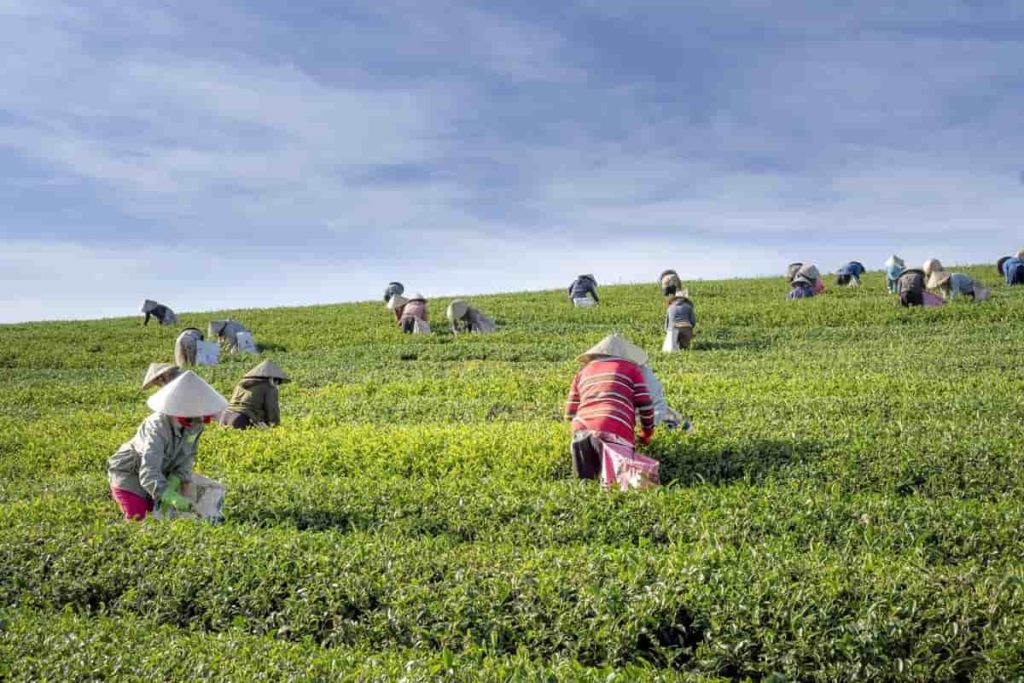
Procedure and certificate of ownership required for buying agricultural land in Vietnam
Certificate of ownership of the property attached to agricultural land
The right to use agricultural land and the state certificate of ownership of the property attached to agricultural land.
Land allotted or leased by and recognizing the rights of use of agricultural land or acquiring/transferring the rights of use of agricultural land under the law of agricultural land users. The following are the meanings of certification by the state for the users of agricultural lands;
In terms of legal and economic aspects: The state issues a certificate which means that the rights of use of agricultural lands by the state. Formal identification belongs to a particular owner, other entities are bound to show respect and do not take any action to infringe on the plot of this agricultural land. A certificate is a prerequisite for owners to fully exercise their rights to agricultural land. In particular, participation in the public market for agricultural land (transfer, contribute capital, mortgage) is also a prerequisite for agricultural land users to gain economic benefits from agricultural land.
Is there any compulsory tendering or prior approval process for the sale of agricultural land?
In Vietnam, land (including agricultural land) is owned by the state and cannot be sold or bought. Land use rights can only be leased to foreign organizations from the state or local individuals and organizations. However, the law imposes certain conditions on the transfer.
There are no specific prices for agricultural land use rights. Prices are determined on a case-by-case basis based on certain principles, such as;
- Land use at the survey time.
- Term of land use.
- Popular market value of transferred land types with same land use;
- Winning auction price, if applicable; Or
- Income from land use. At a given time, the value of the land adjacent to the same land use, profit, and income from land use should be the same.
In case if you miss this:
Agricultural land policy and main developments in Vietnam
Briefly outline the current agricultural policy and key developments in your jurisdiction. Vietnam is a member of the;
- World Trade Organization (WTO).
- Food and Agriculture Organization (FAO).
- International Plant Protection Convention (IPPC).
- Vietnam is not a member of the Office International des Epizooties (IOE) / World Animal Health Organization.
The government has issued many policies to encourage and support investment and development in agriculture on a small and industrial scale, including;
Decree No. 57/2018/ND-CP of the incentive policies government for enterprises agriculture land areas investment.
Decision No. 899/QD-TTg of the Prime Minister approving the project for agriculture to raise the added value. It especially encourages the use of biotechnology and advanced technology in agricultural production.
Decision No. 1819/QD-TTg of the Prime Minister favorable the agricultural restructuring plan, and which aims to;
In case if you miss this: Agriculture In South Korea, How To Start
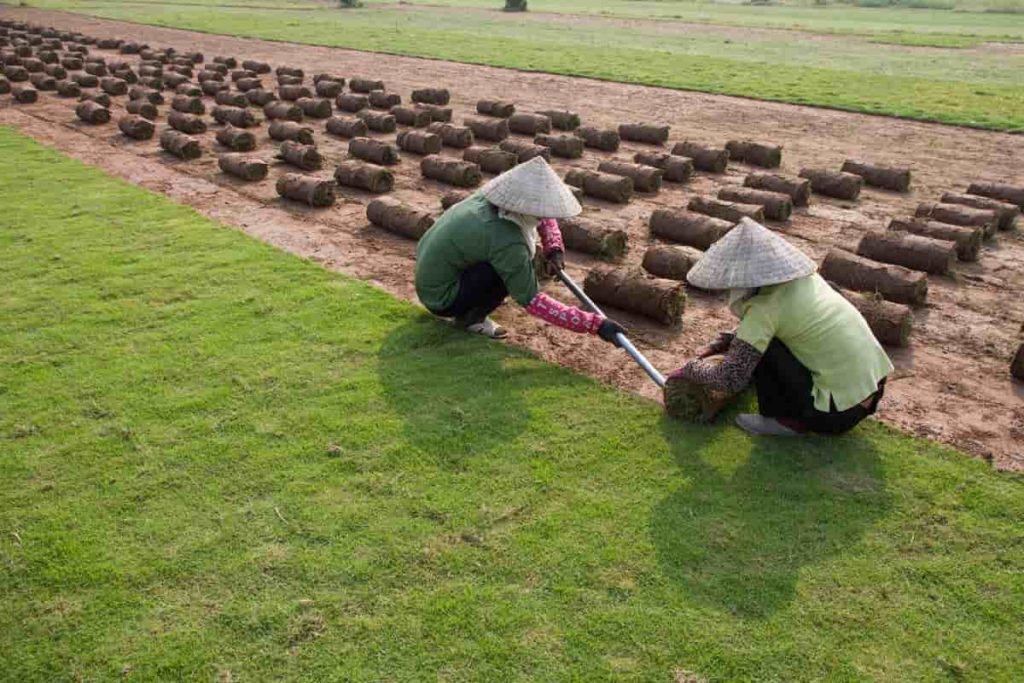
Specific restrictions on the transfer of agricultural land use rights
- Ensuring sustainable agriculture development and rural areas;
- Increase value, efficiency, and competitiveness;
- Improving the lives of farmers;
- Poverty reduction; and
- Protect the environment and national security.
In some cases, there are also restrictions on the transfer of agricultural land use rights, such as;
- Economic organizations cannot obtain paddy land use rights from households or individuals, except for approved masters changes in the purpose of land use according to plans and land use plans.
- Some people like households and individuals who are not directly involved in agricultural production cannot transfer the right to use land.
Households and individuals cannot transfer or donate land use rights in protected forests, ecologically rehabilitated zones are strictly protected zones and special-use forests unless they are in those protected forests or special-use forests.
Agricultural land policies in Vietnam
Agricultural land policies in Vietnam have had a positive impact on agricultural production in the following ways;
- Facilitating farmers to be active in their labor, production, and transactions so that Production efficiency and income generation from land. Vietnamese farmers benefit from agricultural land policies in many ways. They are; agricultural land is handled freely for them. They have the right to organize and plan their cultivation and sell agricultural products by market principles to improve their lives. The right to transfer the use of land as property. As a result, the lives of farmers have improved significantly.
- Land policies have also allowed farmers to change their economic structure and increase the efficiency of land use.
- As farmers’ households are regarded as independent economic units, farmers are free to participate in appropriate agricultural production activities that can provide them with benefits and a good income. As a result, Vietnam has a wide variety of agricultural products, many households specialize in agricultural products, and the number of households specializing in rice has reduced.
- Land policies also allow farmers access to credit, issuing certificates of right to use agricultural land to farmers not only helps them to secure the right land use transaction process, especially transactions relating to lease, production capital but also mortgage their land use right for credits and loans.
- Land policies have encouraged farmers to collect collective agricultural land for better agricultural cultivation and production. Under land law, farmers can exchange, transfer, or lease their land to obtain suitable agricultural land for mechanization and better farming, as well as to apply scientific methods for their cultivation. Farmers who are not able to participate in effective agricultural activities can transfer the right to use their agricultural land to other farmers so that they have money to start non-agricultural industries.
- Land policies have activated the agricultural land market in rural areas, resulting in more efficient farming land allocation, and new industries have sprung up in rural areas. Markets have been set up for the use of agricultural land in rural areas to facilitate transactions on land use rights and reduce exchange fees. The fact that the transfer of the right to use agricultural land is facilitated creates favorable conditions for rational use of land by market regulations. As a result, it promotes the redistribution of land: between farming, aquaculture, and animal husbandry, as well as in the rehabilitation and development of many traditional handicraft villages in rural Vietnam. In addition to the positive effects, there are still many negative effects of farming land policies.
- Agricultural land policies fail to protect farmers and encourage them to make long-term investments in the land. The fact that the term land use right is too short cannot motivate farmers to make long-term investments to protect agricultural land. At the same time, many farmers misuse chemical fertilizers to get a better crop and ignore investments in long-term improvement. As a result, agricultural land is degraded and even polluted.
Establishment of land law and instituting innovative mechanisms to;
- Extension of annual cropland use conditions,
- Increase in agricultural land area limits,
- Reduction of boundaries on the transfer of land use rights, land acquisition. Provide access rights,
- Promote agricultural land market development,
- Promote large-scale agricultural production areas, and
- Set government standards for effective land scales.
In case if you miss this: Best Vegetables That Grow In Containers
Policy options for buying agricultural land in Vietnam
The policy recommendations suggest that the Vietnamese government may promote land consolidation and professional transformation by modifying the existing land legislation system and promoting modern administrative mechanisms. Such strategies will improve the lives of the poor and increase agricultural productivity.
Extend annual cropland use period – Terms of land use will be calculated from the date of a land grant or land lease decision from the relevant government agency. At the end of the term, the government will give the farmers the option to continue leasing the land, provided they have used it for the approved purpose.
Increase the extent of agricultural land area – In the case of allotment of various types of land to households and individuals, the total land allotment limit is 10 hectares.
Reduce land use transfer limits – Maintain perennial plant land transfer limits: 20 hectares for communes, wards, plains for towns, and 50 hectares for those in the Midlands and Highlands.
Promote the development of the agricultural land market – Move from a centrally planned land stabilization to a government-based market mechanism. Finalize the necessary legal framework and replace the land use transfer tax with an individual income tax.
Promote large-scale agricultural production areas – Plan and develop crop and product production with a competitive advantage.
Government policy should encourage efficient land size – The most effective land size will depend on the type of crop and the land used. Recommendations from the results of a study on the area under rice croplands (as a relatively large representative of agricultural production currently facing small, scattered plots) include;
- Agriculture-earning households only to cross the poverty line, it needs at least 1 hectare per crop for two rice crops.
- The scale of new effective land area as mentioned above is 6 to 10 hectares, depending on the type of agricultural land.
- Types of Pesticides Used in Agriculture: A Beginner’s Guide
- Economical Aquaculture: A Guide to Low-Budget Fish Farming
- 15 Common Planting Errors That Can Doom Your Fruit Trees
- How to Make Houseplants Bushy: Effective Tips and Ideas
- Innovative Strategies for Boosting Coconut Pollination and Yield
- Pollination Strategies for Maximum Pumpkin Yield
- The Complete Guide to Chicken Fattening: Strategies for Maximum Growth
- Natural Solutions for Tulip Problems: 100% Effective Remedies for Leaf and Bulb-Related Issues
- Revolutionizing Citrus Preservation: Towards a Healthier, Greener Future
- Natural Solutions for Peony Leaf and Flower Problems: 100% Effective Remedies
- Maximizing Profits with Avocado Contract Farming in India: A Comprehensive Guide
- Natural Solutions for Hydrangea Problems: 100% Effective Remedies for Leaf and Flowers
- The Ultimate Guide to Choosing the Perfect Foliage Friend: Bringing Life Indoors
- From Sunlight to Sustainability: 15 Ways to Use Solar Technology in Agriculture
- The Ultimate Guide to Dong Tao Chicken: Exploring from History to Raising
- The Eco-Friendly Makeover: How to Convert Your Unused Swimming Pool into a Fish Pond
- Mastering the Art of Delaware Chicken Farming: Essentials for Healthy Backyard Flocks
- 20 Best Homemade Fertilizers for Money Plant: DIY Recipes and Application Methods
- How to Craft a Comprehensive Free-Range Chicken Farming Business Plan
- Brighten Your Flock: Raising Easter Egger Chickens for Beauty and Bounty
- How to Optimize Your Poultry Egg Farm Business Plan with These Strategies
- Subsidy for Spirulina Cultivation: How Indian Government Schemes Encouraging Spirulina Farmers
- Ultimate Guide to Raising Dominique Chickens: Breeding, Feeding, Egg-Production, and Care
- Mastering the Art of Raising Jersey Giant Chickens: Care, Feeding, and More
- Ultimate Guide to Raising Legbar Chickens: Breeding, Farming Practices, Diet, Egg-Production
- How to Raise Welsummer Chickens: A Comprehensive Guide for Beginners
- How to Protect Indoor Plants in Winter: A Comprehensive Guide
- Ultimate Guide to Grow Bag Gardening: Tips, Tricks, and Planting Ideas for Urban Gardeners
- Guide to Lotus Cultivation: How to Propagate, Plant, Grow, Care, Cost, and Profit
- Agriculture Drone Subsidy Scheme: Government Kisan Subsidy, License, and How to Apply Online
- Ultimate Guide to Raising Araucana Chickens: Breed Profile, Farming Economics, Diet, and Care
- Bringing Hydroponics to Classroom: Importance, Benefits of Learning for School Students
- Ultimate Guide to Raising Polish Chickens: Breed Profile, Farming Economics, Diet, and Care
- Ultimate Guide to Raising Australorp Chickens: Profile, Farming Economics, Egg Production, Diet, and Care
- Silkie Chicken Farming: Raising Practices, Varieties, Egg Production, Diet, and Care
- Sussex Chicken Farming: Raising Practices, Varieties, Egg Production, Diet and Care